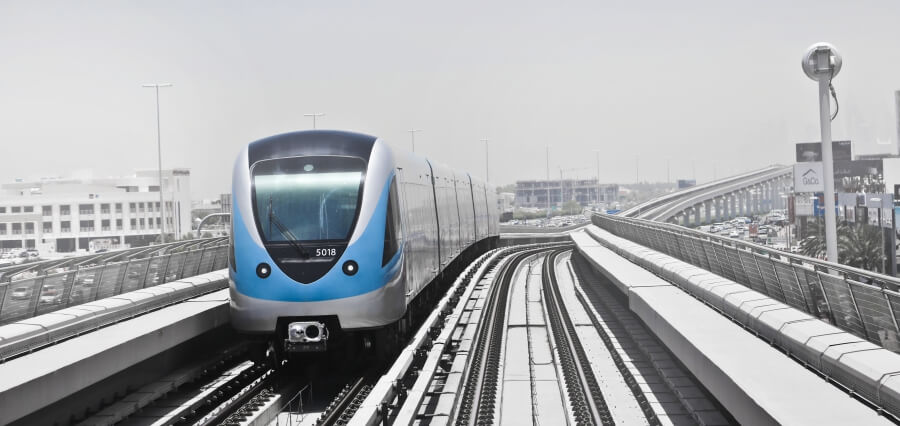“High-speed rail” (HSR) refers to public rail transportation designed for super-fast, long-distance travel that utilizes specially dedicated or upgraded rail cars and tracks. Around the world, rail officials and others typically apply the term to dedicated passenger or mixed passenger and commercial trains that travel at a minimum speed of approximately 123 mph (200 kph). Although the U.S. has produced trains with high-speed capacity, it lags behind the rest of the world in terms of this convenient and safe method of transportation.
The History of U.S. High-Speed Rail
The 1934 stainless steel, diesel Burlington Zephyr, also known as The Silver Streak, and the 1939 steam locomotive Hiawatha trains were among the first trains designed to travel at speeds of 77 to 79 mph (124 to 127 kph), which were considered fast at the time. A 1,200-ton steam-powered overnight coach train, The Trail Blazer, ran between New York City, NY, and Chicago, IL, at 100 mph (161 kph) through the 1940s. That said, these streamliners never reached the modern HSR steady limit.
Even though the U.S. Congress eventually passed the High-Speed Ground Transportation Act in 1965, the country struggled for decades with establishing high-speed rail because of a combination of reliance on commercial freight multi-use tracks, poorly designed and aging infrastructure, dependency on airplanes and automobiles, and bad economic times. As just one example, the National Railroad Passenger Corporation (i.e., Amtrak), which handles the most national passenger railroad traffic today, regularly experiences extensive passenger train disruptions and delays because of freight trains that receive track priority.
Modern U.S. Plans for High-Speed Rail
As of November 2023, the Northeast Acela between Boston, MA, and Washington, D.C., is the only multi-state corridor HSR service. That said, problems with the infrastructure between destinations mean that it can’t always maintain its top speed of 150 mph (241 kph). Beyond dealing with freight traffic, the Acela deals with 100- to 150-year-old bridges and tunnels that can reduce its speed to 30 mph (48 kph). In the earliest days of American railroad construction, companies vying for construction contracts often took shortcuts and refused to consider potential future problems with faster trains handling sharp curves or hilly and mountainous terrain. According to Popular Mechanics, older track designs and systems decrease train effectiveness at high speeds, sometimes by as much as 100 mph (161 kph).
In 2021, the U.S. Congress approved $66 billion for HSR and overall railroad improvements through Amtrak and the Federal Railroad Administration via the Infrastructure Investment and Jobs Act. This approval represents the highest investment in rail since Amtrak’s founding in 1971. Amtrak and French manufacturer Alstom hope to create trains that can handle 186 mph (300 kph) on new, dedicated train lines.
Officials also desire to allocate some of the funds to replace, restructure or upgrade the problematic Northeast and other corridors. President Joe Biden, who often traveled by train between his home state of Delaware and Washington, D.C., during his time in the Senate, has expressed his desire for a better national train system.
How Does the Rest of the World Compare?
Various countries rely on train travel at the same level or more than other forms of transportation. Asia and the European Union, for example, provide many HSR options that give residents and visitors the means to travel comfortably and conveniently to a wide range of destinations at a reasonable cost. According to Business Insider, the European Commission estimated in 2020 that EU passenger trains enjoyed a nearly 89% punctuality rate. During that same year, former Amtrak CEO Bill Flynn told the U.S. Northeast Corridor Commission that the Northeast Corridor (NEC) had a backlog of repairs on standard non-HSR lines that would cost more than $40 billion.
Residents and visitors in other countries and international regions, such as Asia, enjoy HSR travel on regularly repaired dedicated lines with electric trains powered by overhead wiring systems. Many short HSR trains in Asian countries like China, Japan and South Korea use Maglev technology that features magnets instead of traditional wheels. These HSR trains offer a smooth ride at speeds between 200 mph (320 kph) and 373 mph (600 kph). The use of these types of trains is so commonplace that Japan, for example, has even dedicated some train cars to female-only passengers to reduce harassment and crimes against women.
Final Considerations
In terms of overall passenger rail usage, the U.S. is in 10th place globally, behind countries like China, India, Japan, France, South Korea, the United Kingdom and Italy. A resident of Switzerland, the 15th place country, uses trains to travel an average of 1,510 miles (2,430 km) a year. Competition from budget-friendly airlines and rental car and ride-hailing companies has made the adoption of rail to this same degree in the U.S. extremely difficult, even though the U.S. could see the adoption of similar rail usage if the train systems existed and connected states better than existing options.
Additionally, as shown by the attempts to adopt HSR in California, anyone attempting to introduce HSR in a meaningful way faces endless attempts to block progress. For more than 30 years, California has struggled to install a 171-mile (275 km) length of rail tracks because of improper handling of the project, disagreements about route placement and land usage, growing costs and even environmental-impact criticisms.
Yet, the benefits of high-speed rail outweigh all potential concerns and a recent survey showed that 64% of respondents were in favor of prioritizing high-speed rail. HSR breaks passenger train dependency on old, poorly designed and maintained freight lines. Faster speeds provide an equivalent alternative to expensive, environmentally unfriendly planes and offer people who don’t drive more affordable and safe ways to travel for educational, personal and work purposes. Although construction can adversely impact natural spaces initially, overall pollution and accidents related to passenger and freight congestion drop with electric and Maglev technology. HSR can reduce commute times and train crowding caused by limited options.


